What is a dog? This is one of those questions we trainers think about a lot. We know some things that dogs aren’t – they aren’t wolves, they aren’t a toddler, and they don’t have programmable software. They are often part of our family and our daily lives, but why do they do what they do?
In general, we know a dog behaves like a dog because it has dog genes, is built like a dog, and was raised in its individual environment. Dogs have lived with humans for at least 15,000 years and the current worldwide population of dogs may be as high as a billion. Over the millennia we’ve changed the shape, size, and behavior of dogs to create the myriad of breeds that we have today (over 400!). Despite the differences in sizes and shapes, they all have common doggy characteristics – they sense an amazing world through their nose, they communicate through body language and vocalizations, and they eat, sleep, and socialize in similar ways.
Dogs, like other mammals, behave to influence and change their environment. They use their behavior to eat, to mate, to get access to things they like and avoid things they don’t like, and to express hard-wired motor patterns/behaviors. Herding dogs were built to herd, guarding dogs were built to guard, and terriers were built to chase and grab and this means that they will likely do those things when the environment says “now’s the time!”. The squirrel just ran by your border collie and everything in their brain and body said “chase!”. A stranger just walked up to your home and everything in your Great Pyrenees’ brain and body said “guard the flock!”. This combination of genetics, environment, and individual learning history influences your dog’s motivation and makes certain behaviors more likely than others.
So, what does all of this mean for our training? Sometimes we want a behavior – sit!, stay!, come! – that the individual dog in front of us can’t or won’t do. This is a reminder that behavior is complex and we need to take some time to observe what a dog IS doing (when, where, how) so that we can learn why they’re doing it and affect a change as needed. It takes time to teach and/or change behavior, and should be a reciprocal process that is positive, fun, and engaging for both members of the dog-human team. We want both you and your dog to enjoy learning and training and understanding why a behavior is happening can be a great step in that learning process.
Next month – “What is a puppy?” – a deeper dive into all things puppy.
Want to learn more? We recommend;
- Dogs, A New Understanding of Canine Origin, Behavior, and Evolution, Raymond & Lorna Coppinger
- Meet Your Dog; The Game-Changing Guide to Understanding Your Dog’s Behavior, Kim Brophy
- Dog is Love, Clive Wynne
- How Dogs Work – Raymond Coppinger & Mark Feinstein
Happy training!


